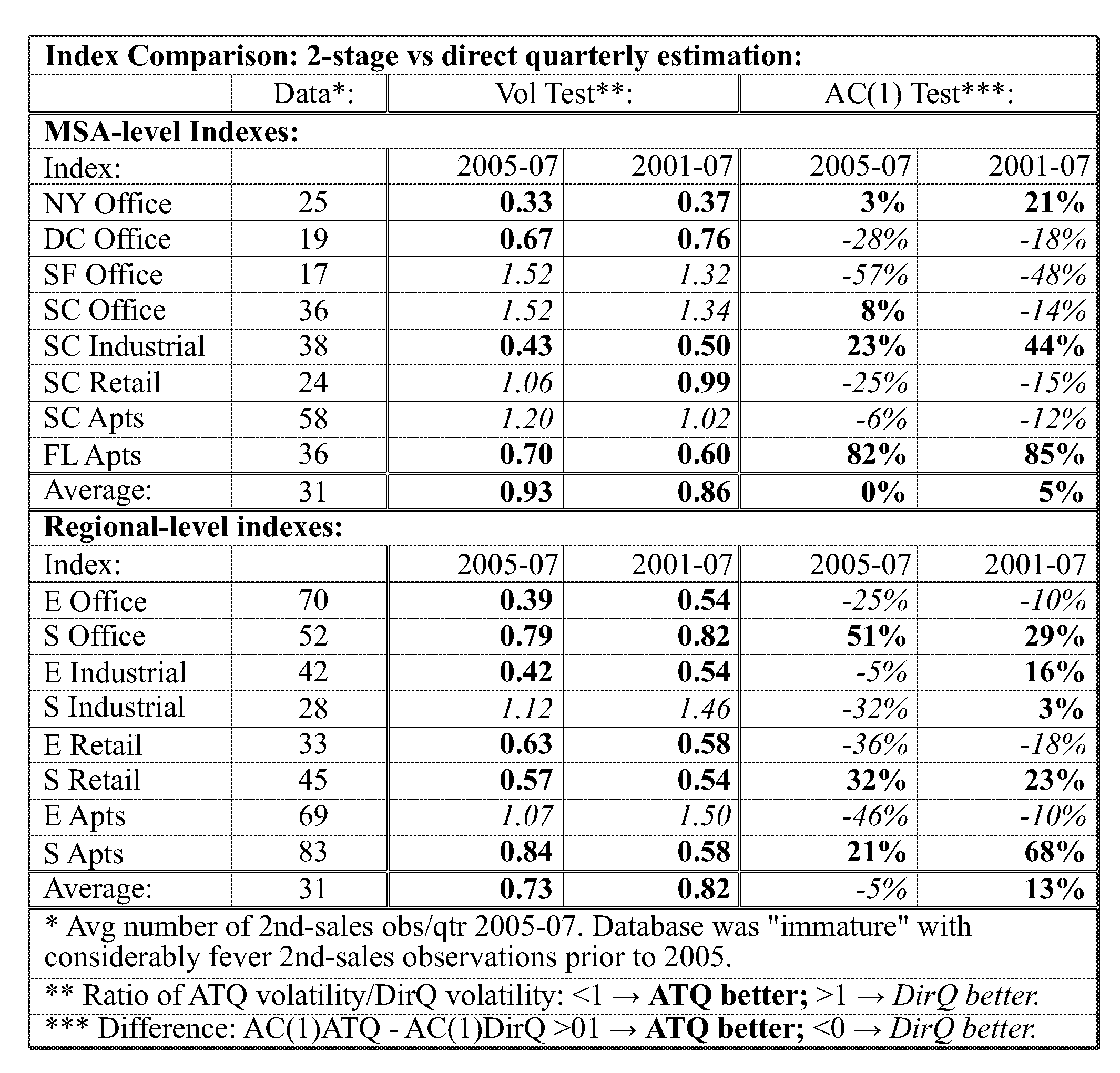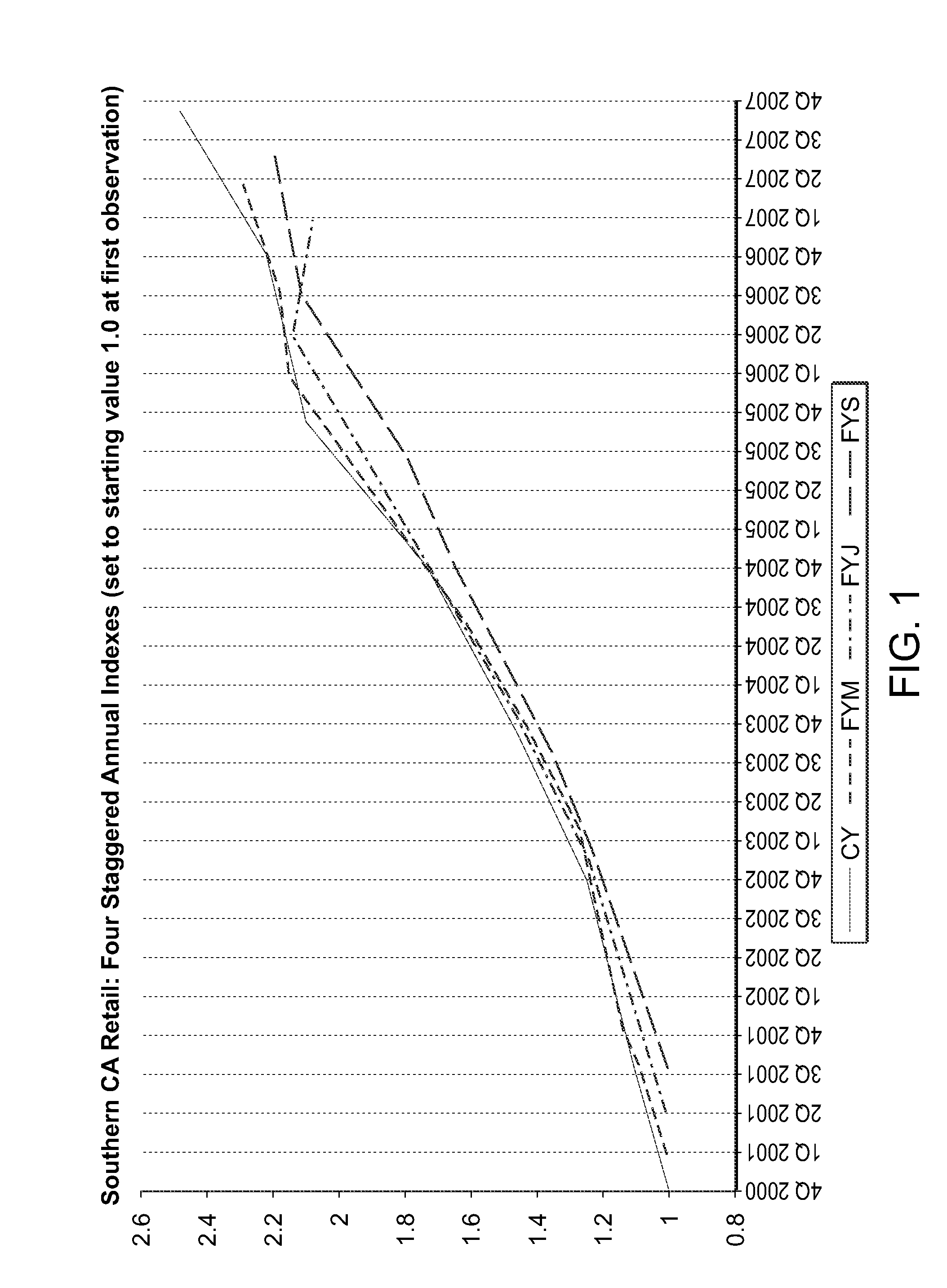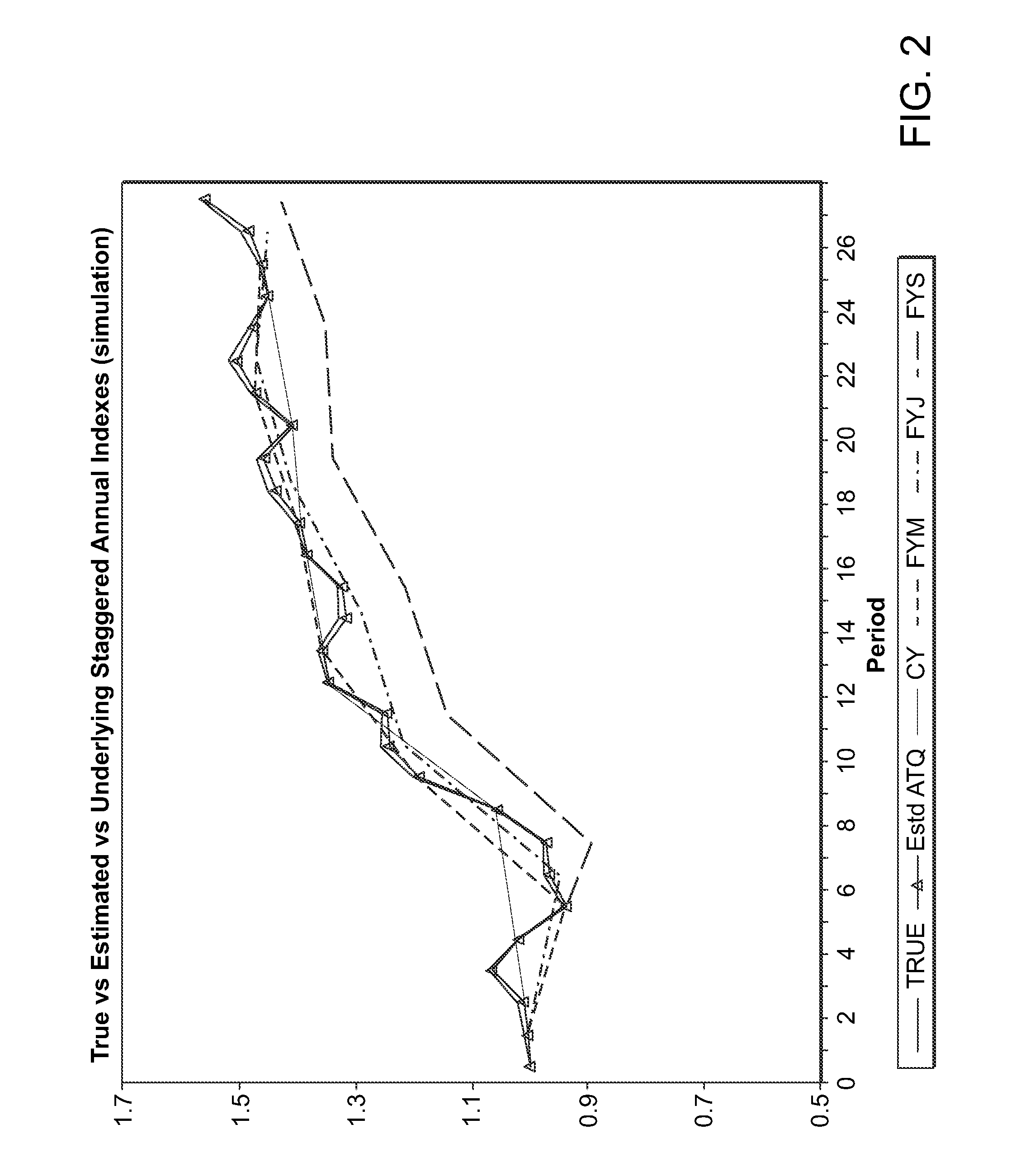Two-Stage Estimation of Real Estate Price Movements for High Frequency Tradable Indexes in a Scarce Data Environment
a technology of high-frequency tradable indexes and two-stage estimation, applied in the field of two-stage estimation of real estate price movements for high-frequency tradable indexes in a scarce data environment, can solve the problems of low use value of noise indexes, insufficient good quality hedonic data, and inability to estimate indexes using transaction data. to achieve the effect of eliminating most nois
- Summary
- Abstract
- Description
- Claims
- Application Information
AI Technical Summary
Benefits of technology
Problems solved by technology
Method used
Image
Examples
case 1
=k (same number of equations as unknowns): X†=X−1
case 2
†=XT(X XT)−1
case 3
>k (more equations than unknowns): X†=(XT X)−1 XT
[0065]In the application for deriving quarterly indexes from staggered annual indexes, Case 2 provides the relevant calculation. Furthermore, it should be noted that when the rank of X is less than k, no unbiased linear estimator, b, exists. However, for such a case, the generalized inverse provides a minimum bias estimation. Properties of the generalized inverse can be found in Penrose (1954) and equation (2) first appeared in Penrose (1956). Proofs of Cases 1-3 can be found in Albert (1972) and a proof of minimum biasedness is given in Chipman (1964). For the basic references on the Moore-Penrose pseudoinverse see the references by Penrose (1955, 1956), Chipman (1964), and Albert (1972) in the bibliography.
PUM
 Login to View More
Login to View More Abstract
Description
Claims
Application Information
 Login to View More
Login to View More - R&D
- Intellectual Property
- Life Sciences
- Materials
- Tech Scout
- Unparalleled Data Quality
- Higher Quality Content
- 60% Fewer Hallucinations
Browse by: Latest US Patents, China's latest patents, Technical Efficacy Thesaurus, Application Domain, Technology Topic, Popular Technical Reports.
© 2025 PatSnap. All rights reserved.Legal|Privacy policy|Modern Slavery Act Transparency Statement|Sitemap|About US| Contact US: help@patsnap.com



